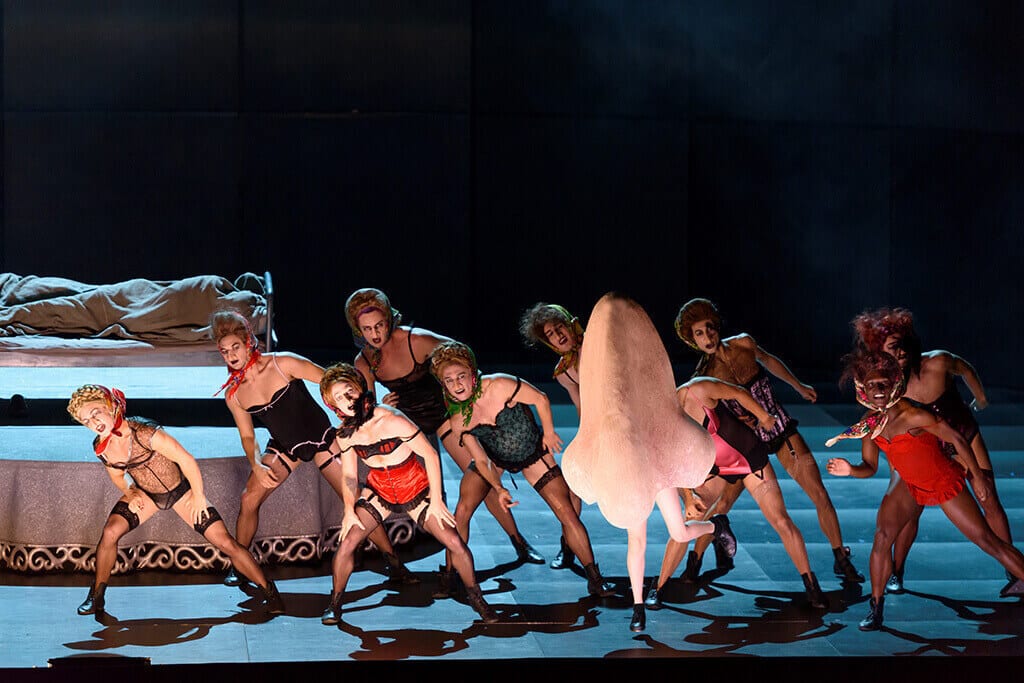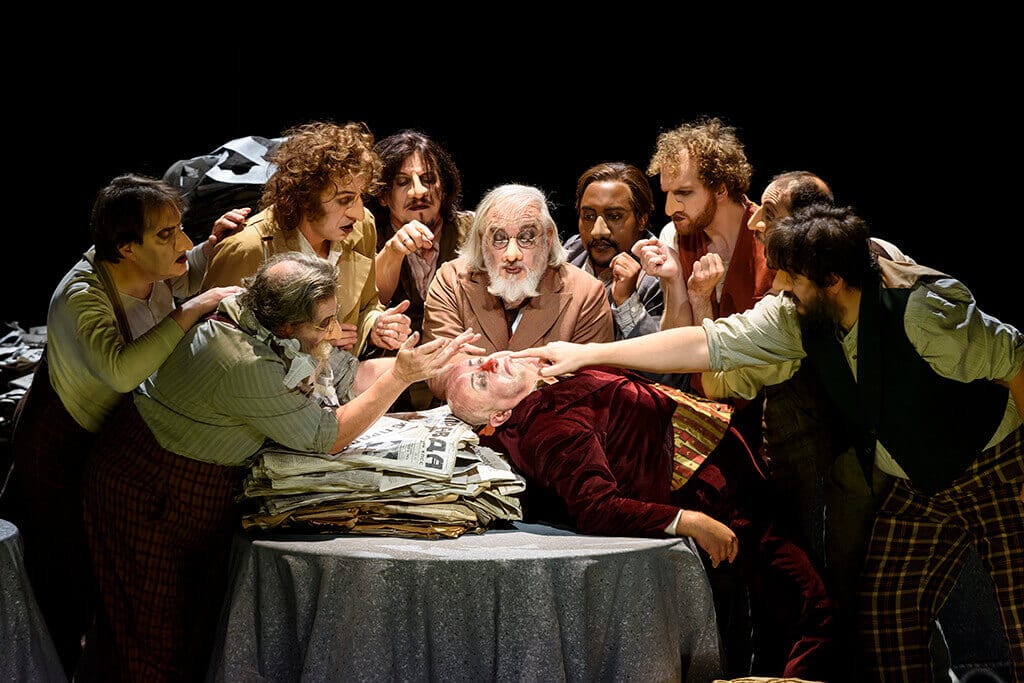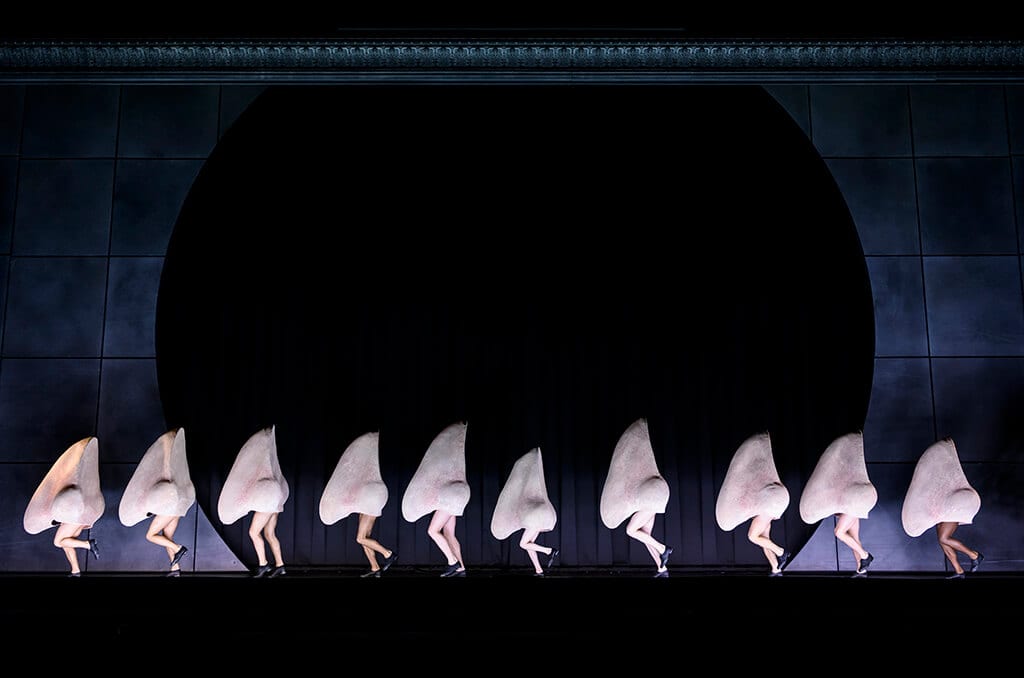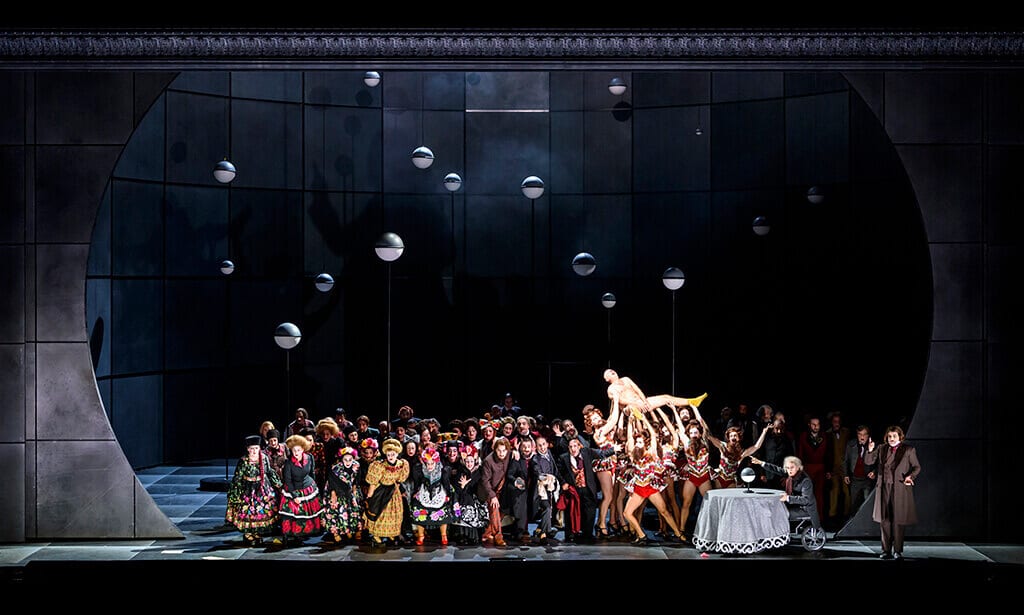The Nose is Shostakovich’s first opera. It was written around 1926/7 during that all too brief period when avant-garde art flourished under the new Bolshevik regime in Russia and it was first performed to a less than enthusiastic response in 1930. In this frenetic production by Barrie Kosky, we are faced with sixteen scenes packed into two hours with no interval. There is an enormous chorus and 77 individual roles with singers taking on three or four parts each; there are interludes of percussion; there are ballets with tap dancing noses and drag queen ballerinas. In the programme notes the director Barrie Kosky says “I’m sure that like most of my productions that have been done in the UK there will be complaints that it is all too much”. I don’t want to disappoint him, so yes it is all too much.
The Nose is based on a short story by Gogol. It is set in St Petersburg and it tells of the minor civil servant, Platon Kovalov, who wakes up one morning to find that his nose has vanished. He sets out on a quest to find his missing nose, trying to enlist the help of the police and of the local newspaper. He discovers that his nose, grown to enormous size, is living a successful life of its own. After many twists and turns in Kovalov’s search, he recovers the nose and, after several unsuccessful attempts to re-attach it have reduced him to despair, it mysteriously returns to his face.
If a label is necessary the best I can come up with is ‘theatre of the absurd’. Shostakovich uses many different musical styles in the telling of the story. There are snatches of Russian folk song, a lot of percussion, and some faux music-hall turns. There is a brilliant and genuinely funny tap dance ballet performed by eleven noses. The singing ranges from the beautiful to the cacophonous, sometimes within the same musical phrase – a singer may sing a few notes, then shriek, then moan, then return to a conventional singing voice. Director Barrie Kosky fills the stage with action, using the striking set designed by Klaus Grunberg and Annie Kuhn to brilliant effect, but with such a scatter gun approach some of the ideas fly and some fall flat. The dancing noses were great – the keystone cops were irritating. Kosky says that the opera is about, amongst many other things, the fear of castration but we didn’t need this idea illustrated so crudely. The opera is sung in an English translation by David Pountney. I don’t know how many of the jokes were Gogol’s and how many were Pountney’s but some are funnier than others.
The central performance of Martin Winkler as Kovalov is superb. The panic as he realises the nose is gone, the despair as he realises that the nose is developing an independent existence, the frustration as the nose refuses to return to its rightful place – all are portrayed with wit and style. Amongst so many short solo roles it is impossible to do anything other than pick three that caught my imagination – the evergreen John Tomlinson as the sinister doctor is excellent, Rosie Aldridge as the barber’s wife has a nice seaside postcard impact, and Ailish Tynan, as a candidate to become Kovalov’s wife, shines in a tiny role. Ingo Metzmacher, a conductor who works mostly around the German state opera houses, does a tremendous job in holding the whole thing together and the Royal Opera chorus and orchestra do him proud.
This opera is full of invention and exuberance but short on quality. The central mad idea has a powerful charge of absurd humour to it, but not enough to sustain two hours of music drama. The performances – as we would expect from the Covent Garden company – are very fine and totally committed. The evening is a welcome opportunity to see an operatic curiosity but no more than that.








